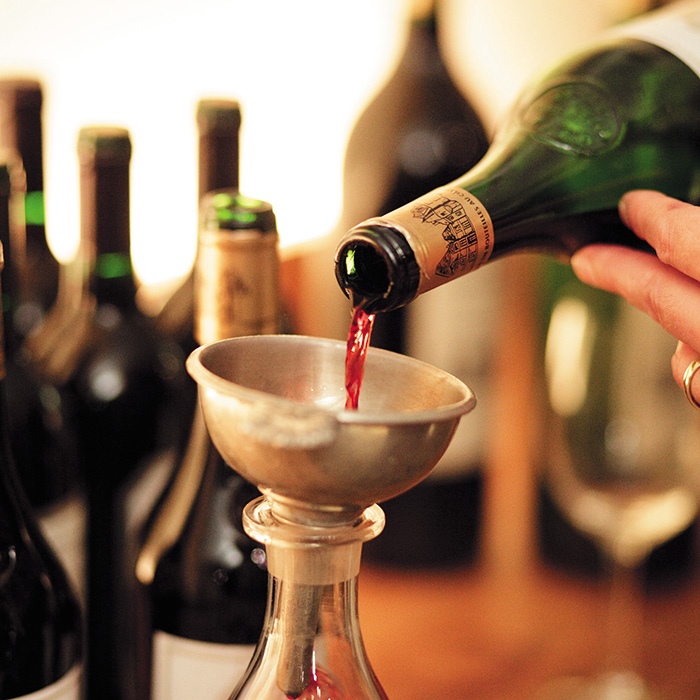On the simple art of decanting
Author: Katie Rolph
The act of decanting a wine is pretty simple: in straightforward terms, it is transferring the wine from the bottle into another vessel, either for the purposes of removing something (sediment) or adding something (oxygen) to the wine, both of which aim to give the best possible experience for the drinker.
Knowing what, and when, to decant is another matter.
Light, youthful, fresh white wines designed for immediate drinking on release, dry Sherries and sparkling wines don’t require decanting.
Red wines that have been aged in bottle may have thrown sediment. This gritty afterthought from the wine’s production doesn’t cause any harm, but is unpleasant to consume and is undesirable in the glass. As such, these wines are good candidates for decanting.
Avoid decanting delicate, old, red wines as they can deteriorate very quickly once decanted. If you’re unsure, follow the maxim for mature wines; decant later rather than sooner.
Youthful red wines that have a strong tannic profile may benefit from decanting, not because of sediment (although they may carry a sediment) but rather because exposure to oxygen accelerates development. The physical act of pouring the wine into a decanter will entice the wine to develop more quickly than if you’d simply opened and poured it straight from the bottle.
If you’ve made the decision to decant, consider the following advice:
- Check the condition of the wine before pouring (there is no point in decanting a corked bottle).
- Stand the wine up for 12 hours ideally; this will allow any sediment to settle at the bottom of the bottle.
- Pour it steadily and carefully into your chosen receptacle, leaving some wine in the bottom (if you have stood the bottle up for long enough, most of the sediment will be lurking at the end of the bottle).
- Consider using a decanting funnel – a cone-shaped device with a filter section that captures the sediment as the wine is poured through it (a muslin cloth will work just as well, or simply a steady hand and a beady eye).
- There are a myriad of beautiful styles of decanter available, but a clean jug works just as well – and is easier to clean afterwards.
- Simply drawing the cork and leaving the bottle to stand for an hour or two before drinking it – ‘allowing the wine to breathe’ – does virtually nothing towards aerating the wine.
- Double decanting (out of bottle, into decanter and back into the rinsed bottle) is great for tannic, young wines and gives you the advantage of knowing exactly what is in each bottle, rather than facing the possibility of mixing up multiple decanters and forgetting which is which.
Ultimately, decanting is a personal choice; be guided by your instincts and remember decanting is not just for Port. Many wines will benefit from a careful decant and, as their drinker, so will you.
For more discussion on decanting read Anne McHale’s piece, ‘The great decanting debate’.




We’ve had a lovely Christmas trying new young wines and presumed Berry’s House Red was one of them. We felt very embarrased when pouring this as there was an awful amount of crusty sediment which hadn’t just sat on the bottom it was through the wine. We would appreciate your comments on this so we can be enlightened and let our guests know the outcome as it has been a talking point unfortunately for us
Kind regards
Ally black
Dear Ally,
I am so sorry to hear about this; not at all what one wants at Christmas, or indeed, any time of year. A member of our Customer Service team will be in touch with you shortly to discuss the matter.
Very best wishes,
Sophie Thorpe
Editor